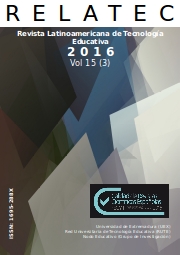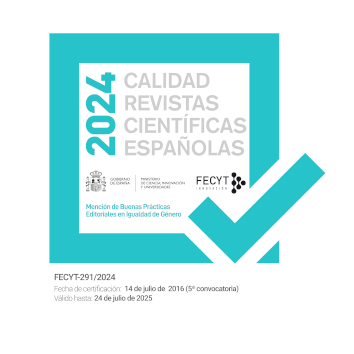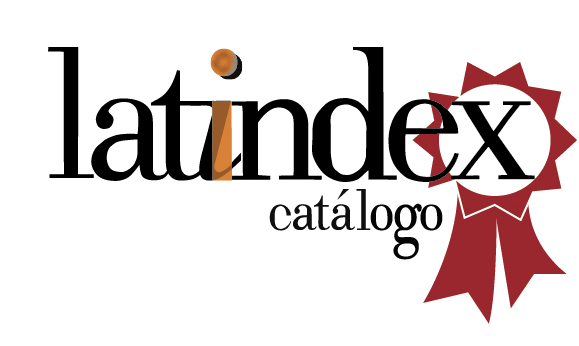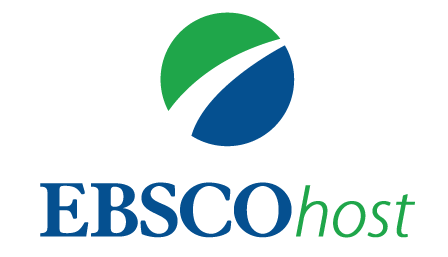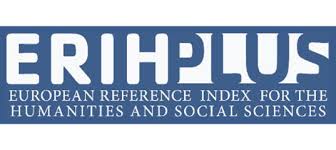Construcción de un mundo virtual en Minecraft para el aprendizaje del patrimonio escultórico urbano / Building a virtual world in Minecraft for learning urban sculptural heritage
DOI:
https://doi.org/10.17398/1695-288X.15.3.83Palabras clave:
Videojuegos, Educación del patrimonio, Minecraft, Recurso Educativo, Visita Virtual / Computer Games, Heritage Education, Educational Resourses, Virtual VisitResumen
En este artículo se describe una experiencia para divulgar el patrimonio escultórico a los alumnos a través de un mundo virtual inmersivo en tres dimensiones. Este mundo se ha construido con Minecraft y consiste en una simulación 3D de un espacio físico que representa parte de la ciudad de Santa Cruz de Tenerife, en concreto la Rambla que cruza toda la ciudad y el Parque García Sanabria. En esta zona de la ciudad se encuentran ubicadas 24 esculturas correspondientes a la I Exposición Internacional de Esculturas en la calle. Dichas obras se han colocado en el mundo virtual, en su ubicación real y se ha diseñado una actividad para realizar una visita virtual. En este trabajo, se detalla los pasos necesarios para crear el entorno virtual mediante programas gratuitos que se pueden manejar con conocimientos informáticos básicos. Para probar este material, se ha realizado una acción con 12 estudiantes del Máster de profesorado para validar los aspectos tecnológicos, medir el aprendizaje y al finalizar la actividad, se ha pasado un cuestionario de satisfacción.
Abstract
This article describes an experience to divulge the sculptural heritage to students through an immersive virtual world in three dimensions. This world has been built with Minecraft and consists of a 3D simulation of a physical space that represents part of the city of Santa Cruz de Tenerife, specifically the Rambla which crosses the entire city and the Parque García Sanabria. In this area of the city, 24 sculptures are located corresponding to the First International Street Sculpture Exhibition. These works have been placed in the virtual world in its actual location and designed an activity to make a virtual tour. This paper details the steps to create the virtual environment working with free programs that can be used with a basic computer knowledge. To test this material, an activity has been performed with 12 students belonging to the Master of Education to validate technological aspects, measure the learning improves and at the end, the students fill a satisfaction questionnaire.
Descargas
Referencias
Ball, H. (1978). Telegames Teach More Than You Think. Audiovisual Instruction, 23(5), 24-6.
Barab, S., Dodge, T., Ingram-Goble, A., Peppler, K., Pettyjohn, P., & Volk, C. (2010). Pedagogical dramas and transformationalplay: Narratively rich games for learning. Mind, Culture, and Activity, 17(3), 235-264.
Blunt, R. (2007). Does Game-BasedLearning Work? Results from Three Recent Studies. Interservice/Industry Training Simulation & Education Conference (I/ITSEC). Orlando, Florida, USA: NTSA.
BOE. (2015). Boletín Oficial del Estado, Disposiciones generales. Madrid: Ministerio de Educación, Cultura y Deportes.
Bos, B., Wilder, L., Cook, M., & O'Donnell, R. (2014). Learning mathematics through Minecraft. Teaching Children Mathematics, 21(1), 56-59.
Bowman, R. (1982). A Pac-Man theory of motivation. Tactical implications for classroom instruction. Educational Technology, 22(9), 14-17.
Bracey, G. (1992). The bright future of integrated learning systems. Educational Technology, 32(9), 60-62.
Brand, J., & Kinash, S. (2013). Crafting minds in Minecraft. Education Technology Solutions, 55, 56-58.
Canossa, A., Martinez, J., & Togelius, J. (2013). Give me a reason to dig Minecraft and psychology of motivation. Computational Intelligence in Games (CIG), (pp. 1-8). IEEE Conference: IEEE.
Chamizo, J. A. (2010). Una tipología de los modelos para la enseñanza de las ciencias. Revista Eureka sobre enseñanza y divulgación de las ciencias, 7(1).
Clark, D., Tanner-Smith, E., & Killingsworth, S. (2014). Digital Games, Design and Learning: A Systematic Review and Meta-Analysis (Executive Summary). Menlo Park: CA: SRI International.
Craft, J. (2016). Rebuilding an Empire with Minecraft: Bringing the Classics into the Digital Space. The Classical Journal, 111(3), 347-364.
Davidson, D. (2011). Well Played--Vol. 1, No. 1. Pittsburgh, PA, PA: Entertainment Technology Center Press.
Dawley, L., & Dede, C. (2014). Situated learning in virtual worlds and immersive simulations. In Handbook of research on educational communications and technology (pp. 723-734). New York: Springer.
De Lucia, A., Francese, R., Passero, I., & Tortora, G. (2009). Development and evaluation of a virtual campus on Second Life: The case of SecondDMI. Computers & Education, 52(1), 220-233.
Driskell, J., & Dwyer, D. (1984). Microcomputer videogame based training. Educational Technology, 24(2), 11-15.
Educativas, I. d. (2011). Proyecto Imagine: Juegos Digitales para el Aprendizaje. Departamento de Proyectos Europeos.
Estallo, J. (2009). El diagnóstico de «adicción a videojuegos»: uso, abuso y dependencia. In E. Echeburúa, F. Labrador , & E. Becoña , Adicción a las nuevas tecnologías en adolescentes y jóvenes (pp. 151-166). Eds.
Eurydice, E. (2009). Educación artística y cultural en el contexto escolar europeo. . Bruselas: Secretaría General Técnica.
Fontal Merillas, O. (2003). La educación patrimonial. Teoría y práctica en el aula, el museo e Internet. Gijón: Ediciones Trea SL.
Gee, O. (2013). Swedish school makes Minecraft a must. The Local, p. 9.
Giménez, J., Ruiz, R., & Fernández, R. (2007). Concepciones sobre la enseñanza y difusión del patrominio en las instituciones educativas y los centros de interpretación: estudio descriptivo. Enseñanza de las ciencias sociales: revista de investigación, (6), 75-94.
Gredler, M. (1996). Educational games and simulations: A technology in search of a research paradigm. . In D. Jonassen, Handbook of research for educational communications and technology (pp. 521-539). New York: MacMillan.
Gros, B. (1998). Jugando con los videojuegos: educación y entretenimiento. Bilbao: Editorial Desclée De Brouwer.
Gros, B. (2004). Pantallas, juegos y educación. La alfabetización digital en la escuela. Desclée De Brouwer.
Heinich, R. (1996). Instructional media and technologies for learning. Englewood Cliffs, NJ: Simon & Schuster Books For Young Readers.
Hew, K., & Cheung, W. (2010). Use of three‐dimensional (3‐D) immersive virtual worlds in K‐12 and higher education settings: A review of the research. British journal of educational technology, 41(1), 33-55.
Mahedero, L. S. (2015). Tinkercad, una forma distinta de aprender a través de la fabricación digital. Comunicación y pedagogía: Nuevas tecnologías y recursos didácticos, (281), 37.
Melgar, M., & Donolo, D. (2011). Salir del aula… Aprender de otros contextos: Patrimonio natural, museos e internet. Revista Eureka sobre enseñanza y divulgación de las ciencias, 8.
Mills, J. (2016, April 13). Heritagedaily. Retrieved from Recreating medieval towns – an example of why Minecraft is a great learning tool: http://www.heritagedaily.com/2016/02/recreating-medieval-towns-an-example-of-why-Minecraft-is-a-great-learning-tool/109640
Morales, N. (2013). Creación y diseño de las trincheras de la Primera Guerra Mundial con Minecraft. Congreso Internacional de Videojuegos y Educación, (pp. 643-653). Cáceres.
Overby, A., & Jones, B. (2015). Virtual LEGOs: Incorporating Minecraft Into the Art Education Curriculum. Art Education, 68(1), 21-27.
Prensky, M. (2006). Don't bother me, Mom, I'm learning!: How computer and video games are preparing your kids for 21st century success and how you can help! St. Paul, MN: Paragon house.
Rea-Ramirez, M., Clement, J., & Núñez-Oviedo, M. (2008). An instructional model derived from model construction and criticism theory. In Model based learning and instruction in science (pp. 23-43). Netherlands: Springer.
Reigeluth, C., & Schwartz, E. (1989). An instructional theory for the design of compuer-based simulations. Journalof Computer-Based Instruction, 16(1), 1-10.
Saez-Lopez, J., & Dominguez-Garrido, M. (2014). Integración Pedagógica De La Aplicación Minecraft Edu En Educación Primaria: Un Estudio De Caso. Píxel-Bit, Revista de medios y educación, 45, 95-110.
Saorín Pérez, J. L., de la Torre-Cantero, J., Meier, C., Melián Díaz, D., & Drago Díaz Alemán, M. (2015). Creación de réplicas de patrimonio escultórico mediante reconstrucción 3D e impresoras 3D de bajo coste para uso en entornos educativos. Arte, Individuo y Sociedad, 27(3),427-444.
Saorín, J., de la Torre-Cantero, J., Melián-Díaz, D., Meier, C., & Rivero-Trujillo, D. (2014). Blokify: Juego de modelado e impresión 3D en tableta digital para el aprendizaje de vistas normalizadas y perspectiva. Digital Education Review, (27), 105-121.
Short, D. (2012). Teaching scientific concepts using a virtual world—Minecraft. Teaching Science-the Journal of the Australian Science Teachers Association, 58(3), 55.
Shute, V., Ventura, M., Bauer, M., & Zapata-Rivera, D. (2009). Melding the power of serious games and embedded assessment to monitor and foster learning. Routledge.
Soler, A., Luzón, V., Ortega, M., & Doménech, J. (2015). Aplicaciones educativas de los videojuegos: una propuesta didáctica con Minecraft para el aula de ciencias. Revista Internacional de Aprendizaje y CiberSociedad, 19(1).
Squire, K. (2003). Video games in education. Int. J. Intell. Games & Simulation, 2(1), 49-62.
Susi, T., Johannesson, M., & Backlund, P. (2007). Serious games: An overview. Recuperado a partir de http://www.diva-portal.org/smash/record.jsf?pid=diva2:2416
UNESCO. (2006). Textos Básicos de la Convención del Patrimonio Mundial 1972. Textos Básicos de la Convención del Patrimonio Mundial 1972 (p. 245). Francia: UNESCO.
Wendel, V., Gutjahr, M., Battenberg, P., Ness, R., Fahnenschreiber, S., Göbel, S., & Steinmetz, R. (2013). Designing a Collaborative Serious Game for Team Building Using Minecraft. European Conference on Games Based Learning (p. 569). Academic Conferences International Limited.
Wouters, P., van Nimwegen, C., van Oostendorp, H., & van der Spek, E. D. (2013). A meta-analysis of the cognitive and motivational effects of serious games. Journal of Educational Psychology, 105(2), 249-265. https://doi.org/10.1037/a0031311.
Descargas
Publicado
Número
Sección
Licencia
Los autores/as que publiquen en esta revista aceptan las siguientes condiciones:
1. Los autores/as conservan los derechos de autor y ceden a la revista el derecho de la primera publicación, con el trabajo registrado con la licencia Creative Commons Reconocimiento-NoComercial-SinObraDerivada 4.0 International (CC BY-NC-ND), que permite a terceros utilizar lo publicado siempre que mencionen la autoría del trabajo y a la primera publicación en esta revista.
2. Los autores/as pueden realizar otros acuerdos contractuales independientes y adicionales para la distribución no exclusiva de la versión del artículo publicado en esta revista (p. ej., incluirlo en un repositorio institucional o publicarlo en un libro) siempre que indiquen claramente que el trabajo se publicó por primera vez en esta revista.
3. Se permite y recomienda a los autores/as a publicar su trabajo en Internet (por ejemplo en páginas institucionales o personales) antes y durante el proceso de revisión y publicación, ya que puede conducir a intercambios productivos y a una mayor y más rápida difusión del trabajo publicado (vea The Effect of Open Access).

